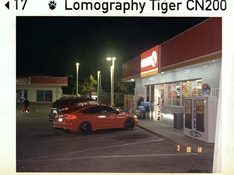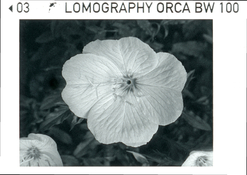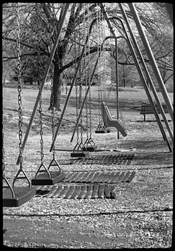You are using an out of date browser. It may not display this or other websites correctly.
You should upgrade or use an alternative browser.
You should upgrade or use an alternative browser.
110/16mm Camera Image Quality
-
A
- Thread starter wjlapier
- Start date
Recent Classifieds
-
Want to Buy Shen Hao TFC617 A or B
- Started by djdister
-
Free CP40Y Color Printing Filtet
- Started by Roger Thoms
-
For Sale For Sale: 55mm ƒ/1.8 SMC Pentax Takumar Lens (M42 thread) and 50mm ƒ/2 Pentax-M
- Started by Kodachromeguy
-
Want to Buy Half Case For Nikon F
- Started by chuckroast
Forum statistics
Kodak, of course, did everything it could to sell more film -- its bread and butter. Too bad they didn't realize that if they made good cameras to go along with it, more people would take more pictures.
I think they saw that most people were happy/preferred to buy other brands of cameras and use Kodak film, so that is why they concentrated on film.
Camera manufacture was probably close to a break even proposition for them from the 1960s on.
Huss
Member
This, plus the fact that no one had said a word about 126 and 110 not being home processing friendly (both were difficult, compared to 35 mm, to get out of the cartridge and impractical to reload -- even though Minolta, Mamiya, and several other 16 mm formats had reloadable cassettes before 126 was introduced, never mind Minox). Kodak never wanted consumers to reload their own film, though -- they sold 35 mm in bulk because it was a traditional consumer expectation going back to when it was the only way to feed your Barnack Leica (before Kodak made a preloaded 35 mm cassette that would work in both Leica and Contax cameras) -- not because they made better margin on that channel. So paper-backed roll film was pushed over 35 mm cassettes, even when the image area was about the same (828) and it wasn't any easier to load (828 again -- the size of the spools and backing makes 828 more difficult to load than even 1930s vintage 35 mm cameras with hinged backs) -- and then one-use cartridge films (126 and 110).
Film in general got a lot better through the 1980s and 1990s -- Kodacolor II was ahead of any C-22 even in 1972, and Kodak just kept improving the emulsions right up until the digital crisis almost killed them. But 110 cameras were basically gone by 1985, except for simple fixed-everything "toy" cameras, because 35 mm drop-in loading had matured, giving 4x the image area, lower cost per frame, and much wider choice of film speeds and emulsions. Once DX coding (and cameras that could read it) came along, the two-speeds limitation of even the better 110 cameras put the nails in the coffin of the format.
Even if you compare machine-made 4x6 prints, you can likely make a case that any film made after 1990 is better than anything you could buy in 1980.
Lomography Tiger *is* Kodak film (the 200 speed consumer stock, Gold?) cut and confectioned by/for Lomography. If it's inferior to 20+ year old Fuji, it's likely because by 2000 Fuji consumer films were, in general, better than Kodak consumer films (IMO) and Kodak has made few improvements in consumer films since they started shutting down lines around 2005.
The weird thing about Lomo Tiger, is after all these years the backing paper still leaks light. They never bothered to fix that!
Huss
Member
Just shot one Lomo Tiger and one Fuji Superia 200 (exp 2020) today in the same circumstances, so will be interesting to compare.
Used the Pentax Auto 110 - what a fun camera!
Used the Pentax Auto 110 - what a fun camera!
Huss
Member
That's bizarre... Well, good to know; thanks!
I ordered a couple of rolls of the Purple to try in my Pentax Auto 110.
This should be interesting...
Fyi my Lomo Purple was actually Lomo Mistaken Identity where due to some mfg mixup, the film is either Purple or Metropolis, no matter what the film rebate says.
So maybe this one was Metropolis even though it said Purple?
Bronson Dugnutt
Member
Tiger 200 handles artificial lighting well and is the most 'normal' of their 110 line, but I'd still rather use Orca I was choosing just one retail 110 film -- it is excellent processed as a negative or positive. I've had one cassette with paper pinholes but no issues with subsequent rolls. I've ever used lomo purple in any format, but 110 would be the first.
Luckily, every 24 exposures of lomo film comes in a semi-reloadable 110 cassette.
Canon 110 ED20 C-41 & Minolta 110 SLR Mkii (reversal)


Spring means it's time to bust out the Ektachrome single-perf. And finally get around to using some unperfed Vision3 50D in the Canon. The date imprint feature is just delightful.
Luckily, every 24 exposures of lomo film comes in a semi-reloadable 110 cassette.

Canon 110 ED20 C-41 & Minolta 110 SLR Mkii (reversal)


Spring means it's time to bust out the Ektachrome single-perf. And finally get around to using some unperfed Vision3 50D in the Canon. The date imprint feature is just delightful.
Huss
Member
I'm still getting those pinholes on Tiger and Orca. Of course random in occurrence and size/# but still happening.
Kino
Subscriber
Fyi my Lomo Purple was actually Lomo Mistaken Identity where due to some mfg mixup, the film is either Purple or Metropolis, no matter what the film rebate says.
So maybe this one was Metropolis even though it said Purple?
Oh great. I'm probably going to actually get the Purple knowing my luck.
Bronson Dugnutt
Member
I'm still getting those pinholes on Tiger and Orca. Of course random in occurrence and size/# but still happening.
For reference, the Tiger 200 I've got at the moment is a 3-pack with a production date of 9/2021 and expiry of 9/2024. I'm not sure what the provenance of that spotty Orca was, but I wonder if it has anything to do with the fact that Orca is only available in individual cassettes. Perhaps to mitigate the odds of all the films in the pack being effected.. but more likely just some baseless internet speculation on a Monday afternoon.
And a belated RIP to DPReview. They couldn't have been all bad if they took the time to review some 110 film.
Huss
Member
Oh great. I'm probably going to actually get the Purple knowing my luck.
Unless you bought Mistaken Identity, it is what it says it is.
Kino
Subscriber
Unless you bought Mistaken Identity, it is what it says it is.
Anybody want 3 rolls of Purple?

Bronson Dugnutt
Member
Anybody want 3 rolls of Purple?
Put'em through that Pentax. There's some great lomo purple shots earlier in the thread from @mtnbkr and others. You can get an aerochrome-y look from it in the right conditions.
Kino
Subscriber
Well... OK. At least I got 3 rolls of Orca 100 as well, so it might not be such a bust after all.Put'em through that Pentax. There's some great lomo purple shots earlier in the thread from @mtnbkr and others. You can get an aerochrome-y look from it in the right conditions.
Anyone know off the top of their head how many square inches of film are in a roll of 110? I'll probably process the Purple in my Jobo using a 3 step Unicolor kit.
Bronson Dugnutt
Member
Well... OK. At least I got 3 rolls of Orca 100 as well, so it might not be such a bust after all.
Anyone know off the top of their head how many square inches of film are in a roll of 110? I'll probably process the Purple in my Jobo using a 3 step Unicolor kit.
Roughly around 1/4th of a 36 exposure roll roll of 35mm, but I've never actually measured. It takes 200mL (well, 180mL) to completely submerge the film on a twist-style yankee clipper reel in the 110/16mm setting.
Kino
Subscriber
Roughly around 1/4th of a 36 exposure roll roll of 35mm, but I've never actually measured. It takes 200mL (well, 180mL) to completely submerge the film on a twist-style yankee clipper reel in the 110/16mm setting.
Thank you.
Donald Qualls
Subscriber
Roughly around 1/4th of a 36 exposure roll roll of 35mm,
110 film is 16 mm wide and 18 inches (~450 mm) long. It's a bit less than 1/4 of a 35 mm -- just under half the width, less than half the length.
Bronson Dugnutt
Member
I exposed the last of my preloaded Double-X cassettes this morning in the two most ornery subminis I've got: the Steky & Viscawide.
Viscawide 16 ST-D, f/16 'H'
Double-X, D-96 stock 8'



The camera feels a bit chintzy, is an ergonomic nightmare and scratches the hell out of film, but the glass is legit... not to mention the novel format. I've just got to try to break myself of the bad habit of using it portrait orientation.
I shot the Steky at the same time, metering, film, and development (f/16, 1/100s with yellow filter) and the negatives came out cooked. Serviceable results, but between the density and significant bowing of the negatives its gonna take more than a quick scan to get a fair representation to post here. Stay tuned.
Edit: I had to bust out the 110 lomo digitaliza holder to keep the Steky's film flat and (mostly) unbowed. The Steky cassettes introduce substantial curl if you leave the film in them for any significant period of time.
Steky II, f/16 "1/100s" with yellow filter
Double-X, D-96 stock 8'


Viscawide 16 ST-D, f/16 'H'
Double-X, D-96 stock 8'



The camera feels a bit chintzy, is an ergonomic nightmare and scratches the hell out of film, but the glass is legit... not to mention the novel format. I've just got to try to break myself of the bad habit of using it portrait orientation.
I shot the Steky at the same time, metering, film, and development (f/16, 1/100s with yellow filter) and the negatives came out cooked. Serviceable results, but between the density and significant bowing of the negatives its gonna take more than a quick scan to get a fair representation to post here. Stay tuned.
Edit: I had to bust out the 110 lomo digitaliza holder to keep the Steky's film flat and (mostly) unbowed. The Steky cassettes introduce substantial curl if you leave the film in them for any significant period of time.
Steky II, f/16 "1/100s" with yellow filter
Double-X, D-96 stock 8'


Last edited:
Huss
Member
I exposed the last of my preloaded Double-X cassettes this morning in the two most ornery subminis I've got: the Steky & Viscawide.
Viscawide 16 ST-D, f/16 'H'
Double-X, D-96 stock 8'
View attachment 335516 View attachment 335517
View attachment 335518
The camera feels a bit chintzy, is an ergonomic nightmare and scratches the hell out of film, but the glass is legit... not to mention the novel format. I've just got to try to break myself of the bad habit of using it portrait orientation.
I shot the Steky at the same time, metering, film, and development (f/16, 1/100s with yellow filter) and the negatives came out cooked. Serviceable results, but between the density and significant bowing of the negatives its gonna take more than a quick scan to get a fair representation to post here. Stay tuned.
Edit: I had to bust out the 110 lomo digitaliza holder to keep the Steky's film flat and (mostly) unbowed. The Steky cassettes introduce substantial curl if you leave the film in them for any significant period of time.
Steky II, f/16 "1/100s" with yellow filter
Double-X, D-96 stock 8'
View attachment 335526 View attachment 335527
How cool!
Huss
Member
Huss
Member
I had a Viscawide for a while, and it's great for panoramas -- if you have an enlarger that can handle a format that wide.
The Viscawide is an unusual, brick-shaped 16mm panoramic camera from the early 1960's with a 120 degree angle of view. The camera is just under 5" wide, just over 2" deep and just under 2 " tall -- one on the largest subminis. And it's pretty heavy, too! There were at least two, nearly identical, models made. The first model had speeds of H (High), S (Slow), and OFF, while the second model had speeds of H, and S only. H on both models is 1/300, while S is 1/60. McKeown reports that the image size is 10x46mm. Spy Camera lists the image size as 10x52mm. The image size on the model I examined is definitely 10x49mm. Where these other authors got there measurements from is unknown. Perhaps they took somebody's word for it, or perhaps the model II had a different format size, and perhaps there is a model III, as well. Two special cassettes are required, but the camera can use 16mm film with any type of perforations. The camera unfortunately does not have a tripod socket or cable release which would make enlargements from panoramic negatives more feasible. But the bottom of the camera is flat so that the camera can be easily used on any flat surface for stability. All models have a 25mm (f3.5 - 16.0) rotating, but non-focusing lens. Persumably, the lens on all models is set to allow infinity focusing, even when opened up all the way to f3.5. Filters were available and are of the slip-on type. They are about 15mm in diameter. Ten exposure were produced on each roll of film. The camera had a pop-up, wire-frame sports-finder on the top for composition. For information about reloading these cassettes, proceed to the DARKROOM section of the SUBCLUB.
Here's a shot I took with a Viscawide:

The Viscawide is an unusual, brick-shaped 16mm panoramic camera from the early 1960's with a 120 degree angle of view. The camera is just under 5" wide, just over 2" deep and just under 2 " tall -- one on the largest subminis. And it's pretty heavy, too! There were at least two, nearly identical, models made. The first model had speeds of H (High), S (Slow), and OFF, while the second model had speeds of H, and S only. H on both models is 1/300, while S is 1/60. McKeown reports that the image size is 10x46mm. Spy Camera lists the image size as 10x52mm. The image size on the model I examined is definitely 10x49mm. Where these other authors got there measurements from is unknown. Perhaps they took somebody's word for it, or perhaps the model II had a different format size, and perhaps there is a model III, as well. Two special cassettes are required, but the camera can use 16mm film with any type of perforations. The camera unfortunately does not have a tripod socket or cable release which would make enlargements from panoramic negatives more feasible. But the bottom of the camera is flat so that the camera can be easily used on any flat surface for stability. All models have a 25mm (f3.5 - 16.0) rotating, but non-focusing lens. Persumably, the lens on all models is set to allow infinity focusing, even when opened up all the way to f3.5. Filters were available and are of the slip-on type. They are about 15mm in diameter. Ten exposure were produced on each roll of film. The camera had a pop-up, wire-frame sports-finder on the top for composition. For information about reloading these cassettes, proceed to the DARKROOM section of the SUBCLUB.
Here's a shot I took with a Viscawide:
Huss
Member
The unfortunately named Viscawide STD
 bluemooncamera.com
bluemooncamera.com
Viscawide 16 St D: International Camera Museum : Blue Moon Camera and Machine
Blue Moon Camera & Machine: View the Viscawide 16 St D in the Blue Moon International Camera Museum. Find price history, items for sale, history, and examples of historic photographic equipment and film.
Huss
Member
Huss
Member
Bronson Dugnutt
Member
The unfortunately named Viscawide STD
Viscawide 16 St D: International Camera Museum : Blue Moon Camera and Machine
Blue Moon Camera & Machine: View the Viscawide 16 St D in the Blue Moon International Camera Museum. Find price history, items for sale, history, and examples of historic photographic equipment and film.bluemooncamera.com
Fun fact: That face-on photo of the Viscawide was taken as the lens was sweeping out an exposure. The lens is rotated out of view most of the time.
If I think I'll need to adjust the aperture I'll carry a small screwdriver or pin to better manipulate the aperture ring. Even then my copy has lots of play in the ring so you really need to visually inspect the size of the opening. The worst part is the film advance; it's the kind that builds a callous.

Great shots of the dogg-o. 110 SLRs are a thing of beauty.
| Photrio.com contains affiliate links to products. We may receive a commission for purchases made through these links. To read our full affiliate disclosure statement please click Here. |
PHOTRIO PARTNERS EQUALLY FUNDING OUR COMMUNITY:  |















